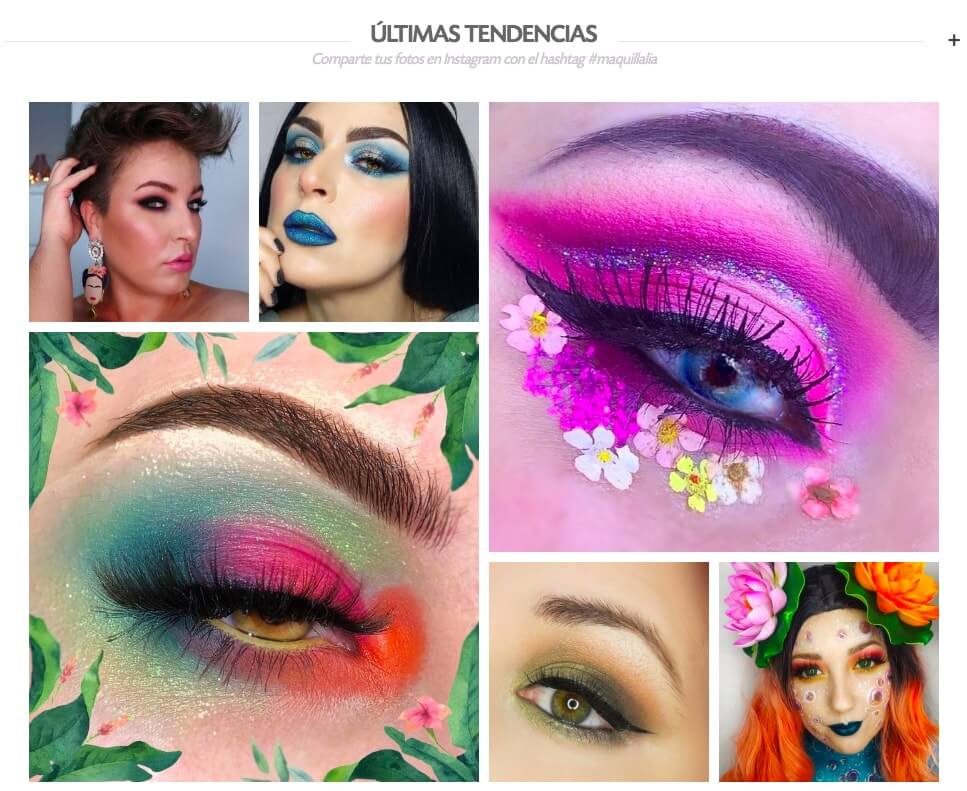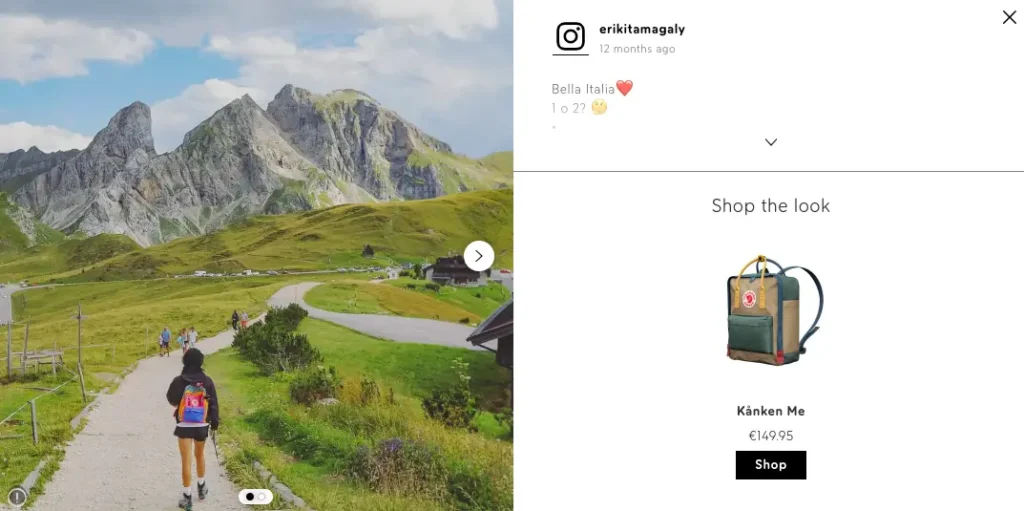Table of Contents
Whilst earned media may seem like a complicated topic, in reality it’s quite simple. Read on as we discuss all forms of earned media, its benefits, its importance and examples.
Earned media is content that is created by a third party, rather than created by the brand itself, which is known as owned media. While content can’t be created by the brand in order for it to be considered ‘earned’, there are still many ways for this content to be leveraged by the brand themselves to gain tangible benefits.
Before we get into those strategies, it’s important to answer two questions:
In this blog post, we’ll help you answer those questions to understand how you can be leveraging earned media in your own eCommerce strategies.
A lot of brands are currently using this type of media to increase both engagement with their brand and conversions within their online store – and you can do exactly the same. First things first, let’s clear up any confusion about what earned media actually is.
Media is given the title “earned” because it gives a brand an edge that self-promoted content simply cannot achieve. When someone writes something positive about your brand or validates one of your products by posting a picture of it on Instagram, they are saying that your brand is deserving of their praise. You are earning their trust and, moreover, they are excited enough about your product to confidently give it their stamp of approval for their friends, family, and – with social media in the picture – the world to see. This type of media has essentially become online word-of-mouth, driving traffic, engagement and sentiment surrounding your brand.
This means a whole lot in a world that’s all about curating the perfect online persona. UGC platforms, such as Flowbox, offer an easy-to-use interface that can collect earned media across social media sites and then display it in high-performance widgets on your website. This clear social proof makes customers more likely to trust your brand and products. To put this into perspective, VOX a furniture brand, has increased its eCommerce conversions by 18.76% with the help of this type of media.
Most important of all, however, is that earned media does not include any kind of media that you pay for. Paying a publication to write a piece of content featuring your brand, while still a useful strategy, is paid media – not earned media. Paid media can help contribute to earned media, such as producing a video which then goes viral, but that kind of strategy requires a completely different focus and plan of action.
It brings numerous advantages to businesses, tapping into the potential of word-of-mouth and social media shares to reach a wider audience naturally. This form of publicity generates organic exposure, serving as a cost-effective marketing strategy. Additionally, it offers valuable insights through customer reviews and testimonials, providing essential feedback to inform and improve business practices.
This form of media is crucial because it provides third-party validation and credibility to a brand, as it comes from sources independent of the company. It can enhance brand reputation, build trust with the audience, and increase visibility without direct financial investment. Additionally, it often reaches wider audiences through various channels, contributing to brand awareness and fostering organic growth.
When thinking about media that falls in the earned category, there are generally two formats that we can consider: written and visual. These days, we have very different spaces for finding both. Let’s start with earned media that is written down.
The most common form of written media is what we find in a newspaper, magazine, podcast, or online publication. When your brand gets featured in a piece of content written by a well-established or famous publication, this can mean a lot in terms of media-buzz and press.
However, it isn’t always easy to get your brand featured in such a publication without a paid execution or a huge story or announcement about your brand. There is still hope, though!
One very useful tool is HARO, or help a reporter. With this tool, you can sign-up to receive lists of journalists who are looking for specific stories. If you’re lucky, one day you’ll find the perfect HARO post to answer that could just get your brand featured in a major publication or podcast.

While you did a little bit of the work, it’s still earned media because it gives the brand that authentic edge that makes this kind of content so powerful.
There are also industry blogs and interviews that will help make a splash in your sector. Some big benefits of getting featured in industry blogs include:
Although social media is undoubtedly a powerhouse for eCommerce brands, don’t underestimate the influence behind blogs. The endless array of Pinterest boards made up of eCommerce round-ups signal why brands should have a presence in the blogosphere. This is especially true for those in the fashion space.
This brings me to our next form of earned media: a content or product round-up.
HARO is also the perfect tool for getting yourself featured on a round-up that makes sense for your brand. Publications are constantly calling for brands to share information for them to feature on their newsletters and round-ups.
The best part is: you’re not bothering people to feature you who you aren’t sure are even looking to feature brands. They are asking specifically for you. So you know you have a high chance of being selected!
When we’re talking about written content about your brand that can be widely published, our minds usually come to customer reviews. They are one of the most important buying features for a lot of people today, and they’re another crucial form of earned media.
Services like Trusted Shops can help give your products the stamp of approval that a lot of consumers look for before making any decision online. While you are giving customers the space to give their input, this would still be considered media that’s earned because you’re not paying for their comments, and it’s extremely authentic.

Even better, use a tool that will verify your reviewers to ensure that shoppers now just how authentic they really are.
Finally, social media can still be a solid place to find written earned media. Especially when you turn to Twitter!
Twitter is an active playground for short form “writers” (meaning your customers) to share thoughts, opinions, and ideas with an engaged audience. So when someone mentions your brand in a positive post, it helps to garner public engagement naturally.

Those are the most popular forms of written earned media, now let’s shift over to the other side of the equation: visual earned media.
Written earned media can be great for a brand, but what if you’re more interested in consumers seeing your products? That’s where visual earned media comes into the picture.
The place to turn for visual earned media is Instagram.
While Instagram influencers are normally paid or given a gift for sponsored posts, there are ways to get media from this network. Instagram is a hub for happy customers to share moments of their life – where they also happen to be enjoying your product.
That means normal users sharing authentic content with their friends and family. Not to leverage this kind of content would be a disservice to your brand.
Plus, it’s super easy to collect this kind of User Generated Content to integrated into an embedded Instagram feed in your eCommerce. So not only are customers sharing this kind of content for their followers to see on social media, you can also use it to enrich your online shopping journey like this example from fashion brand, Omoda.

When you leverage this kind of media, it can also help improve your eCommerce performance. By connecting images to products to make them ‘shoppable,’ brands see a 15% increase of conversion rate on average.
And it’s not just Instagram photos and videos that you can collect. Facebook, the original photo and video sharing space, can also be leveraged in the same way as Instagram.
Similarly, we can turn to YouTube for longer videos that feature your products. While YouTube is generally a space for paid promotions, it’s possible to get users talking about your brand by connecting with them in a more organic way.
Follow their work, let them know that you watch their videos by commenting, liking, and mentioning them on other social media channels. This will also help you a lot when you reach out to them via email or meet them in person.
Once they start mentioning your brand, use this content on your site or on social media to enhance and promote your brand.
Now that we have discussed the distinction between written and visual earned media, let’s take a look at some examples of earned media.
User Generated Content is considered a form of earned media because it is created voluntarily by customers or users who have had positive experiences with a brand or product. This content is freely shared on various platforms, contributing to brand awareness, credibility, and engagement without direct payment or influence from the brand itself. Check out the example of UGC below:

Nowadays most people check out customer reviews before finalising a big purchase, and it’s no coincidence that review management strategies are the focus of many brands. Positive reviews carry a lot of weight as do negative ones. You’ll find this type of media on sites like Trustpilot, Yelp, and TripAdvisor.
Creating your own content and attracting traffic through high search engine rankings can be considered earned in a sense. Nevertheless, it’s important to note that SEO itself isn’t technically categorised as earned media. Rather, SEO is a controlled process aimed at enhancing the performance of your media. Through effective optimisation efforts, you can “earn” organic traffic, thereby making organic traffic a type of earned media, even if the content remains owned media.
When your business makes a significant impact in its industry, you can anticipate receiving media coverage, such as a 90-second news segment on a local or national station. This traditional form of earned media remains relevant today. For instance, if a business relocates its headquarters to a new city and promotes this move online, it might secure an interview opportunity with the local news station to discuss the creation of new job opportunities.
Newspapers, whether in print or online, regularly cover major community developments that affect people locally and nationally. Therefore, similar to a television news story about a new business venture, local newspapers can easily pick up on these developments and provide coverage for their online readership.
Let’s delve into some essential tips to help you navigate and succeed in harnessing the power of this form of media when crafting your strategy. Take a look at the helpful advice below:
If you play your cards right, you can actually leverage this earned content into increasing both eCommerce conversions and engagement in one fell swoop. If you’re wondering how, let’s look at an example from Polish furniture brand, VOX.
VOX has always been at the top of their game when it comes to eCommerce innovation, so when they wanted to make a few updates – adding more photos to the site and including a customer review feature – they realized they had a big opportunity to do both at the same time.
Since they had already put in the work to get customers interacting with them on social media and posting content featuring the brand’s products, they had an onslaught of earned content that was waiting for them. It was simple to collect it and turn it into visual customer reviews on their website, providing authenticity and social proof for their brand.

Displayed in User Generated Content galleries and carousels across their homepage, product pages and more, the brand is able to demonstrate to shoppers that their products are used and loved by other, paying, customers.
Plus, by attaching products to each image, they actually attribute sales to each piece of earned content that they post.

With this feature in their eCommerce store, they’ve seen an 18.76% conversion rate increase and an 18.18% average order value increase. All thanks for their authentic earned content!
Want similar results? Reach out to us at Flowbox by booking a demo, and we can guide your UGC strategy to ensure higher engagement and boosted conversions.
Not all customers inherently become advocates for your brand; it requires effort to not only meet but surpass their expectations. By delivering an exceptional product and or service, you cultivate a brand that resonates with customers, increasing the likelihood of them providing referrals, sharing positive experiences on social media, offering testimonials, and remaining loyal to your brand over the long term.
Interacting with customers online is a great way to encourage more media. Establish filters within your social monitoring tools to track discussions related to your brand, intervening when there’s an opportunity to contribute. Engage your followers by prompting discussions about their daily routines or experiences with your brand, and acknowledge your most enthusiastic supporters publicly. Demonstrating genuine care towards your audience and your brand’s reputation by responding to their posts can evoke positive sentiments that are worthy of sharing.
Creating your own content forms a part of a robust strategy, the more memorable content you create the more likely it is that consumers will share it and interact with it. Retweets and reshares are classified as forms of earned content.
We recommend not limiting yourself to only social media as the channel for content distribution. All channels matter! There are other ways to distribute content like newsletters for example.
Earned and paid media are two distinct approaches to expanding a brand’s visibility. Earned content relies on organic publicity through promotional efforts, such as press coverage and social media mentions, while paid media involves investing in advertising space, including social media ads and sponsored content. Earned content emphasises credibility and relationship-building, while paid media offers immediate exposure through targeted messaging. Integrating elements of both strategies can enhance a marketing campaign’s effectiveness by maximising impact and engagement.
While often perceived as a more economical approach, this isn’t always the case. Numerous companies allocate substantial sums to PR endeavours to bolster their brand image and enhance outreach efforts. Obtaining this type of media can be arduous, given that journalists and other content creators are inundated with pitches from companies on a daily basis.
Lastly, this form of media notoriously lacks tracking mechanisms, making it challenging to gauge true return on investment (ROI). For instance, while quantitative metrics can indicate the influx of new visitors from one website to yours, tracking results from a print magazine proves elusive.
That’s everything you need to know about earned content. The final question is: how do you want to leverage it?
My advice: make a plan, then stick to it. UGC platforms are a game changer when it comes to saving time and upping efficiency, plus the impact of earned content can potentially skyrocket your brand’s engagement and sales if you plan well and commit.
User Generated Content: Why integrate? Here are 8 reasons why you should do it!